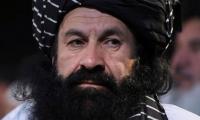In its last meeting, the Monetary Policy Committee (MPC) decided to cut the policy rate by 250 basis points to 15 per cent. Per the MPC Statement, “Taking into account the inherent risks associated with these factors, the MPC assessed that the near-term inflation may remain volatile before stabilising within the target range.”
Lo and behold: Pakistan has achieved a year-on-year headline inflation rate of 4.9 per cent, the lowest since May 2018.
However, inflation, like any economic metric, is merely an indicator and does not incarnate the underlying economic realities. Inflation, at its core, measures the rate of change of increase in overall prices. When the base is astronomically high, as it was in November 2023 with a CPI of 29.2 per cent – where currency depreciation and global commodity shocks incited food and energy prices to a crescendo – in this situation, the rate of change will naturally appear subdued.
Furthermore, inflation figures often fail to capture the full picture due to methodological shortcomings. The outdated base year of 2015-16 does not reflect current consumption patterns, and the weights of items in the consumer basket are derived from the Household Integrated Income and Consumption Survey (HIICS) conducted in the same period. This fails to account for the dynamic nature of consumer behaviour and the limited range of goods and services currently captured by the CPI.
The calculation of the National CPI also involves the weighted average of Urban CPI and Rural CPI across 12 commodity groups. Urban CPI covers 356 items from 35 cities, while Rural CPI includes 244 items from 27 rural centres. Price data is gathered through four quotations from selected markets with high sales volume, though this limits representativeness. This signifies underrepresentation due to the limited rural sample size, as well as inadequate weighting for major cities, given the disproportionate sample size attributed to them.
Further, in an import-driven economy like Pakistan, global economic trends heavily influence domestic inflation. The broader cooling and monetary easing of major economies such as the US and China has reduced inflationary pressures worldwide, calming commodity markets. This external factor has temporarily provided respite to Pakistan’s inflation metrics as well.
While the inflation rate offers some optimism, the economic reality behind the numbers remains grim. The energy sector continues to face systemic issues, with full cost recovery resulting in ever-rising tariffs that have reduced demand (17 per cent YoY in August). The recent solar glut axes demand further, leading to more and more capacity payment per kWh. And then, fueling the fire, DISCOs also contribute a lion's share in the already financially distressed power sector by letting T&D and recovery losses thrive.
Taxation policies remain regressive, with an over-reliance on indirect taxes that disproportionately burden the poor. Despite these measures, revenue targets are frequently missed, and contingency plans with the IMF often lead to further tax hikes (that is, taxing the taxed). Meanwhile, current expenditures have ballooned, with a 30 per cent year-on-year increase in Budget 25. Alarmingly, 56 per cent of the budget is allocated to interest payments, leaving little room for development spending, which has plummeted by 156 per cent since FY2016.
Privatisation efforts have also faltered, as evidenced by the PIA bidding debacle. State-owned enterprises (SOEs) continue to bleed resources, while private-sector credit remains low, with credits by banks offered at just 12 per cent of GDP. Foreign investments, including expected inflows from Saudi Arabia and debt rollovers from China, have yet to materialise. Economic growth remains insufficient to keep pace with population growth, further compounding fiscal challenges.
The generic sentiment on social media to significantly cut the policy rate more steeply amidst such global and domestic uncertainties may prove premature. For instance, the potential return of trade curbs (and so strengthening the dollar and triggering an import bill) under a Trump administration could trigger a global recession, severely impacting Pakistan's import-dependent economy.
Domestically, real money (M2) growth at 15.2 per cent year-on-year (as of October 25, 2024) has already surpassed the 20-year average; this may orchestrate high inflation in the near future. A more cautious approach would involve a mindful cut (if any) in the policy rate in the short run and addressing structural weaknesses in the long run.
To achieve sustainable financial stability, Pakistan must adopt a holistic approach to its economic challenges. Fiscal discipline, including cutting costs related to inefficient SOEs, elitist tax expenditures, and pension liabilities, is paramount. As suggested by the fiscal theory of the price level, prudent fiscal policies are essential to control inflation. Fiscal policy should guide monetary policy to ensure coherence between the two.
Investments in development projects should be prioritised to achieve fiscal sovereignty and reduce dependence on imports. These projects must be free from political interference, focused on development rather than mere infrastructure, and contribute to the welfare and economic growth of the people. Export diversification is crucial, and reducing non-essential imports, currently estimated at 28 per cent by the LSE, should be a short-term goal. Over the long term, substitution strategies for the remaining 72 per cent of imports must be implemented.
Tax reforms are imperative to shift the burden from the poor to the elite. Better governance of the withholding regime, along with restructuring subsidies using tools like the National Socio-Economic Registry (NSER) scorecard (as in BISP), can ensure targeted welfare distribution. The energy sector requires an overhaul to address inefficiencies, pulverise rent-seeking, and stabilise the circular debt. Currency and forex reserves strengthened to shield the economy from external shocks. Efforts to digitise and formalise the economy could also improve revenue collection and reduce leakages.
The Pakistan Bureau of Statistics (PBS) must also update the CPI basket more frequently to better reflect evolving consumption patterns. By including relevant consumer items and expanding the sample of urban and rural sectors, the government can gain a clearer understanding of consumer behaviour. This would enable more effective policymaking to address the challenges faced by consumers.
While the recent inflation figures may provide a semblance of relief, they should not distract from the deeper economic challenges that Pakistan faces. A comprehensive and coordinated approach, encompassing fiscal discipline, structural reforms, and targeted policies, is essential to ensure sustainable growth and financial stability.
The writer is a Peshawar-based researcher who works in the financial sector.
Region has been in turmoil since 2022 with people demanding flour subsidies similar to those provided in GB
Analysts noted that unipolar order persists while new multipolar paradigm remains nascent
Out of 34 universities in province, 24 are operating without regular vice-chancellors, whereas 21 seats of learning do...
Islamabad's strategic importance in US foreign policy has always been volatile, rising and falling with shifting...
Author says PTI founder is setting unrealistic targets for a party that is not in position to carry them out
Bilawal’s lack of mass mobilisation among country’s youth remains glaring gap in his political journey







